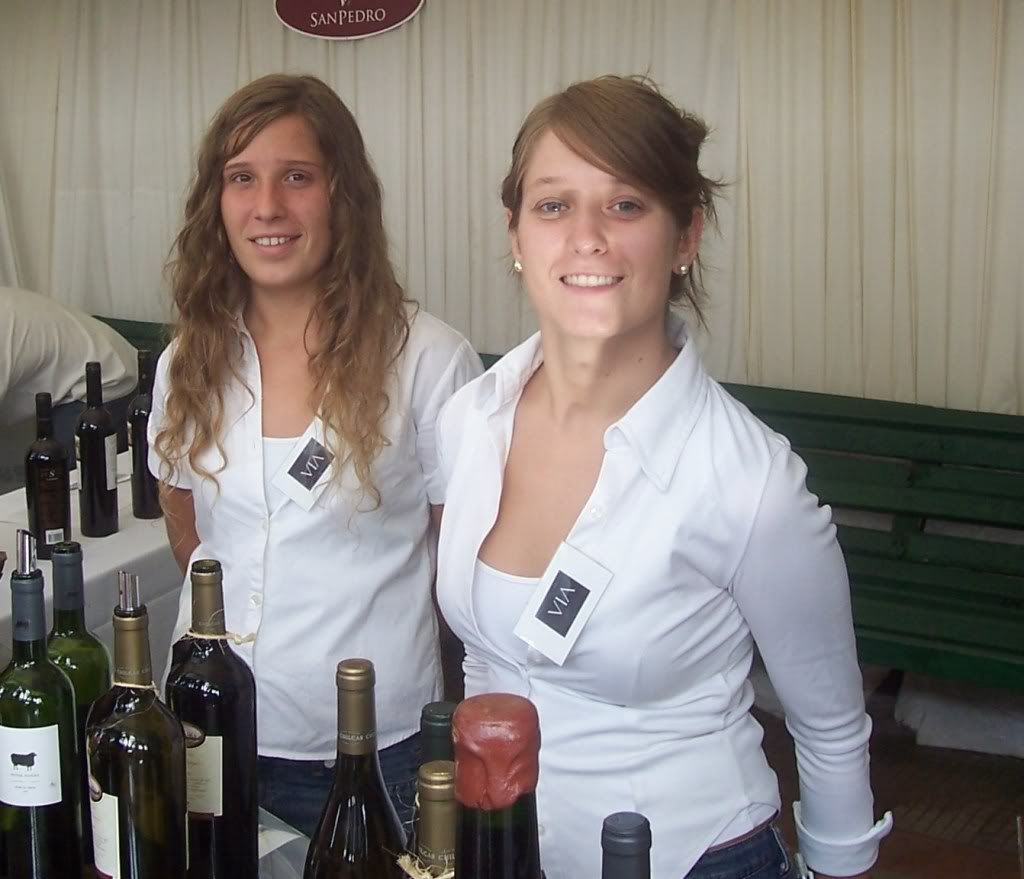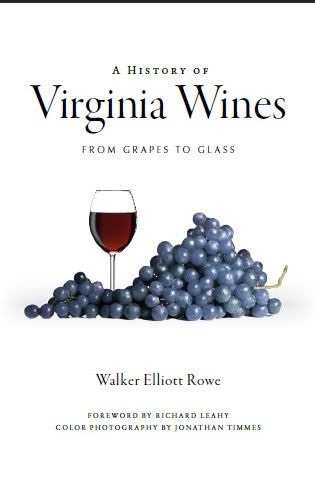In the flat vineyards of Chile growers who do not use drip irrigation simply flood their vineyard from one end to the other. As the gentle giant winemaker François Massoc at Calyptra explains in English, “Water has owner”. This 35 hectare vineyard and 100,000 liter winery might lie along both sides of the Cachapoal river, but in the arid desert farming which is Chilean agriculture one cannot simply siphon off the water just because it is within arms reach.
Most of Chile´s vineyards are located in the flat plains in the valleys. But Calyptra is 1,000 meters up in the Andes, a twisting and turning 45 minute drive beyond the city of Rancagua just beyond the entrance to one of Chile´s nationalized copper mines. Here in winter--unlike in most of the country--it actually snows as photos provide by François attest. Most Chileans are accustomed to looking up at the snow of the Andes from, say, Santiago but here at Calyptra you can walk in it. Beyond copper and snow it is an accident of geography that the vineyard here surrounds the famous Cauquenes hot springs on two sides. A resort is build over the top of the hot springs there that well up into a cavernous somewhat humid and dripping Roman-bath-style building. Above the hotel is an aqueduct built high into the hillside traversing deep canyons in open air as it ferries precious irrigation water from one side of the mountains to thirsty farms and vineyards in the other direction.
François came to the 20 year old Calytra five years ago having studied winemaking in Burgundy. For Burgundians by traditionthe most important part of making wine has little to do with the winemaker are more to do with the vineyard soils and location. This notion is etched into law by the French system of appellation d'origine contrôlée .
So it is with François and his outlook. This former barrel maker who was Chilean manager of the French cooperage Nadalie and still makes his own barrells says, “I am ashamed to say I am an enologist. I don´t think the winemaker is important.” He says the best wines in the world are made in the vineyard the machinations of man not withstanding. After school he tempered his enthusiasm for manipulations and all things French with a tendency to remontage, pigeages, and otherwise orchestrate the gushing red juice into the barrel and bottle. “I try not to put my signature on the wine. I try to respect the fruit. Here you don't need an intervention. I prefer to make an honest product. The great wines in the world are like that. Domaine de la Romanée-Conti and it's neighbor La Romanée, that I know very well and I have tasted. They are wonderful, but very different. Because they are honest winse. That is one part of the French philosopy that I want to keep is honesty."
The vineyards here of pinot noir, chardonnay, cabernet, syrah, merlot, and sauvignon blanc are delimited by soil type which François has carefully measured and mapped. Each plot is fermented separately, measured, and blended together again according to the taste of the winemaker which he says varies by soil. In melodious that is self taught François says what is important is soil drainage which in turn turn depends on the percentage of rocks in the soil, their make up, and using the French word he says “argile” meaning clay.
François repeats some of the sometimes amusing observations which are prevalent throughout Chilean vineyards. In the winery grapes are sorted along a vibrating table staffed with women because their dainty little fingers are more nimble than those of men. The women can snatch up unripe or rotten grapes and toss them to the side for quickly than men. Asked about this François says, “Of course it is true.” In Chile such sentiments might be labeled “machista” (chauvinist). But in the USA such this type of thinking can get you into trouble with the feministas and their government mandated oversight.
The wine tanks here are insulated with cooling jackets so there is a temperature gauge on each none of which are to be trusted. Yes says François that presumption is true too.
In traditional Burgundy men plunge nude into the tank or open top fermenter punching down grapes (pigeages) so they don´t dry out as the gases of fermentation cause them to rise. François keep his cloths on doing when he does this using his feet to push the fermenting grapes back down into the juice taking care not to crush any seeds. He says, “I learned that in Burgundy. As there is a lot of carbon dioxide its really dangerous for my workers. As I am the tallest it is safer for me.”
We take a tour of the vineyards on this day late in the harvest season in June driving down a winding mountain road. The last of the harvest has just been completed and end-of-season rains have caused the mountainside to come tumbling down in a mudslide that nearly took a truck heavily laden with fruit over the side. The driver had just driven past just before the hillside gave way.
Because the weather is ideal for grape farming in Chile, there is not much use of agricultural spray to combat the rots and fungus as is done in the rainy parts of Europe. At Calyptra only sulfur is applied. They spray it every two weeks to keep botrytis and powdery mildew off the leaves and fruit.
François has changed much since coming to the farm. Part of the vineyard was overly vigorous producing too much fruit that had to be dropped off by hand in what is called a “green harvest”. So François changed the training of those vines from spur to guyot. The vines here are otherwise well balanced only requiring hedging one time per year where as in more vigorous sites in Chile it can be up to 4 times . One plot runs north to south instead of east to west. François says that alignment with the sun produces 1 gram less of acid in the final fruit. So he sells that fruit to other wineries keeping the best for himself.
Regarding acid he says Chilean white grapes measure up fine but that all of the red grapes in Chile need to have acid added by the winemaker. This is because in the long California-like growing season the fruit hangs in unending sunshine their the sugar level increasing while the pH falls off as does the level of tartaric and malic acid (low pH means high acidity) as the optimal part of this curve is reached and surpassed. This is generally not the case is regions with more rain and cloudy weather like say Virginia or New York.
François did his thesis at the university in preserving color in pinot noir wines. But here as in most of Chile the greatest portion of the red wine production is cabernet sauvignon while he does produce some pinot noir. So François gives a barrel tasting of 4 different cabernet sauvignon wines produced from different plots to show the differences owing to the differing soil
Starting with plot number 23 François asks with boyish humor from whence came the name then supplies the answer, ”It is called 23 because it is located between plots 22 and 24”. Laughing at his answer he says the vines here had been a tangle of fruit which the owner had not bothered even to prune and wanted to abandon. François dug deep pits to inspect the subsoil and mapped the property by the electrical conductivity of the soil. He then told the owner it would produce fine wine in this plot saying he would pay the costs of production and harvest himself if he was wrong on this point. François says the soil in plot 23 are older alluvial soils--which are those round stones worn down by the river and glacial erosion--coming from the last glacial period of which there have been four.
The wines from plots 24a and 24b are big tannic wines somewhat similar, but plot number 8 produces wine that is less gripping. François says these are colluvial rocks which are the big rocks that crack off and fall from the mountain. He says, “This is the youngest soil of them all. It has the most complexity and is the most feminine of the wines of the four. It is a welcoming wine. It has nice length.”
All of this discussion of soil makes sense to the farmer. I have a vineyard and farm in Virginia. The first vines I planted by hand before I had money to buy a tractor to drive the wooden trellis posts. It was back breaking labor because the topsoil was shallow clay on top of hardpan subsoil. Another richer farmer might have hooked up a subsoiler to crack the subsoil where roots could penetrate. Instead the roots in my vineyard grow outward in all directions interlacing themselves with neighboring vines unable to grow deep. This is not bad as the fertilizer the farm applies to the soil leeches only a few inches into the group. But grape vines roots explore going deep were they can reaching a depth of as much as 40 feet in places like Burgundy. As the roots go deep they dislodge minerals in the soil bringing them up to the surface and into the fruit and foilage. In short this is why soils matter.
Putting the last bung into the barrel François relates a French dictum that “One must respect the barrel”. In other words as you taste wine you can spit out what you don´t drink but not pour it out on the floor. You have to respect the barrel by returning the wine inside. In Spanish “Tienes que respectar la barrica” .








No comments:
Post a Comment